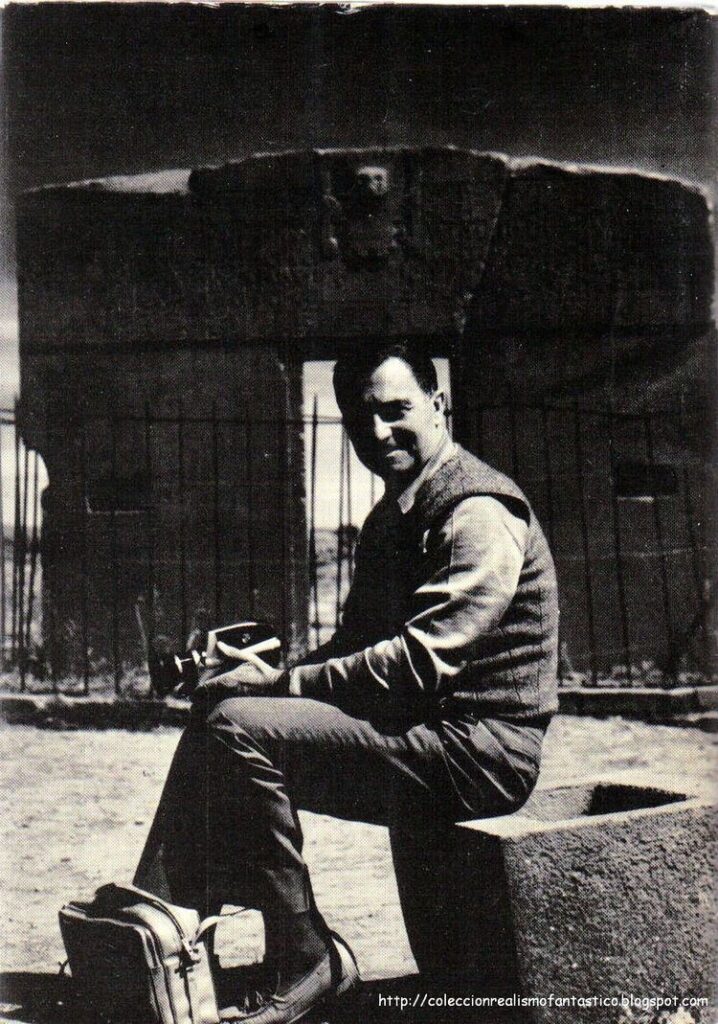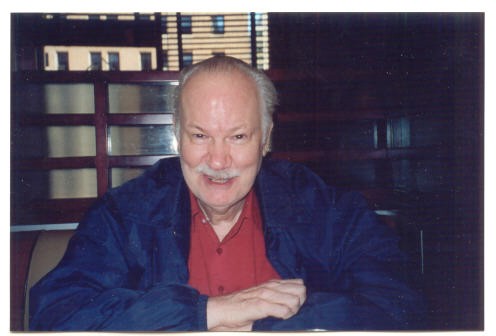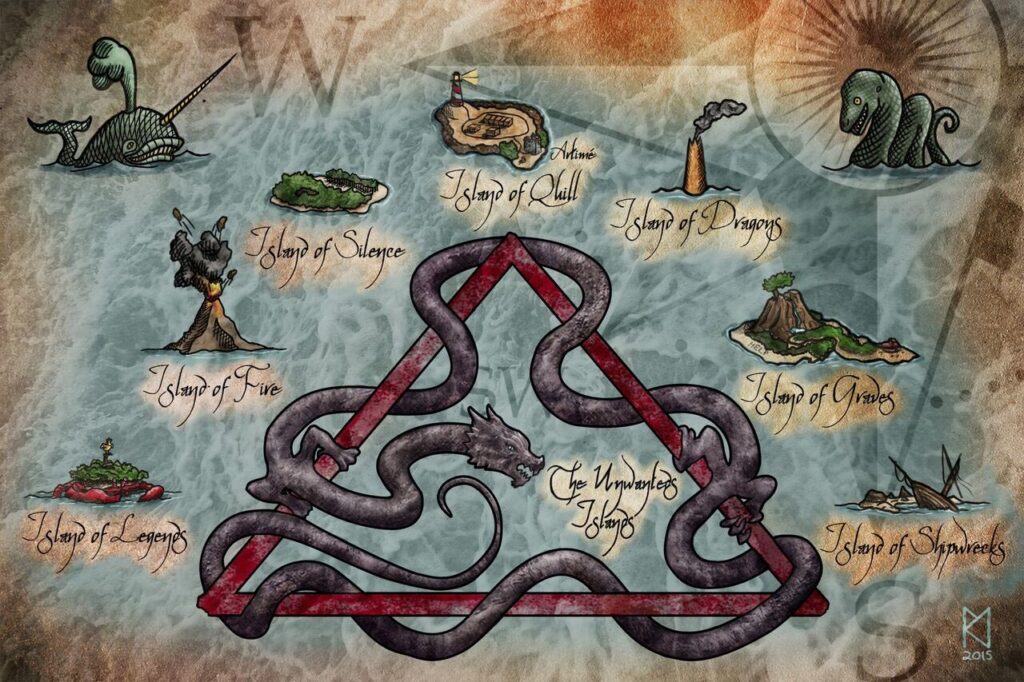BIZARRE INCIDENTS OF TIME SLIPS: FACT OR FANTASY?

A time slip is an occurrence in which people inadvertently step from their time into another time: either the past or the future. Imagine the possibility of witnessing the construction of the pyramids by slaves toiling under the scorching sun in the Valley of the Kings on the bank of the Nile in Egypt, or, going further back in time, entering a primordial fern forest where dinosaurs stalk, or, moving forward in time, being in the year 4000 in which interstellar travels have become possible. Experts on the paranormal have studied this phenomenon and based their conclusion on the scientific theory that time is not linear, but rather occurs like water in a lake: rippling around the same point in space. It seems that “clock-time” alone is not sufficient to explain these time slips.
In 1979 Geoff and Pauline Simpson and Len and Cynthia Gisby, two married couples, went to Spain on vacation. While they were driving through France bound for Spain, they stayed overnight at a hotel. Both couples observed that the hotel was extremely outdated, as the bedroom had no window panes, only shutters. Nor did it have pillows or sheets, only calico fabric. Even the hotel bill they paid seemed too less for the time. When the vacationists had their photos developed, the pictures of the hotel were completely missing from the roll. The couple later returned to the same hotel to spend a holiday, but they could not find it.
An old man from Norfolk, England (let us call him ‘Mr. Squirrel’ for the sake of convenience), had a hobby of collecting coins and keeping them in plastic envelopes. In 1973 he went to a shop in Great Yarmouth, a seaside resort town, to buy these envelopes. This was his first visit to the shop. On entering the shop, he found the atmosphere quite quaint. A woman in Edwardian dress served the customer who bought a bunch of envelopes and came out. When after a week Mr. Squirrel went there again to buy some more envelopes, he was shocked to notice that the place had completely changed. Still having envelopes in hand, he inquired about the woman at the counter, but the staff knew no such woman who worked there. Mr. Squirrel was disconcerted when he was told that those envelopes were never sold at the shop. Then he checked the date of manufacture of the envelopes and came to know that they were manufactured before World War I (1914-1918) and hence they were antique pieces.
Aviators in World War I reported that while circling airports in England, they were utterly amazed to see huge, gleaming metal aircraft of today, totally different from the primitive airplanes of their time.
Unique case of the two English tourists
The classic and much publicised case is the experience which two English unmarried ladies underwent on a visit to the Petit Trianon in Versailles in Paris in 1901. They were Anne Moberly (1846-1937) and Eleanor Jourdain (1863-1924). Moberly, daughter of Bishop of Salisbury, lived in a cultured, donnish society and was appointed Principal of St. Hugh’s. Jourdain, daughter of a Derbyshire vicar, held a doctorate from the University of Paris, specialising in French literature.
While visiting the place on 10th August 1901, they passed some farm buildings which Jourdain described as “deserted”. She noticed agricultural tools, among which was a plough lying about and found that the place gave a “saddening” impression. At a window Moberly saw a woman shaking a white cloth, but Jourdain did not see her. When they walked forward, a queer feeling of depression and unreality began to envelop them. Next they met two men in greenish uniforms with three-cornered hats, obviously gardeners, working with a wheel-barrow. Jourdain saw a cottage in the doorway of which a girl and a woman were standing and the woman was handing a jug to the girl. Their unusual mode of attire, quite different from the style of the early 1900’s, caught the attention of Jourdain: both wore white kerchiefs tucked into the bodice. Then both ladies saw a man, with a dark complexion, marked by smallpox, sitting in a garden kiosk, wearing a heavy black cloak and a slouch hat. His evil expression and repulsive appearance, according to the ladies, filled them with fear and unease. The man turned to look at them, but his eyes were somehow unseeing. He looked through them. This tableau of a past event in the 1700’s, according to the ladies, had an eerie, lifeless and other-worldly appearance- “like a wood worked in tapestry”, as Moberly put it. “There were no effects of light and shade and no wind stirred the trees”, she said. Later they encountered a dark-eyed, handsome man with crisp, curling black hair beneath a large sombrero hat. Though they heard him running up towards them, he appeared unaccountably beside them. He uttered a few words excitedly in French and ran on. They had no idea of where the man went, although they could still hear the sound of his running. Suddenly he was just not there. Moberly and Jourdain walked over a small rustic bridge which crossed a little ravine. A cascade fell down a green bank with ferns and stones. Beyond the bridge a small country house stood in the distance. On the terrace in front of the house Moberly saw a lady with a pretty face, sitting sketching. This lady, who was not young, looked up as they passed by. But, strangely, Jourdain did not see her. When they visited the same place again, the scenery had changed and they could not find any trace of what they had seen before. The two ladies later co-authored a book in 1911, entitled An Adventure, to recount their uncanny experience. Their intensive research to solve the mystery led them to conclude that the repulsive-looking man at the kiosk was Comte de Vaudreuil (1740-1817), a Creole from a French colony in the West Indies and one of Queen Marie-Antoinette’s friends who was responsible for her downfall. The running man was a messenger who had come to warn the queen of the approaching mobs from Paris, due in an hour. The girl seen in the cottage doorway was the gardener’s daughter Marion. The pretty lady was none other than the queen who was guillotined in 1793 during the French Revolution. Moberly, on seeing in 1902 a portrait of the queen by the Swedish painter Adolf Urik Wertmüller (1751-1811), was struck by its resemblance to the lady on the terrace. Moberly and Jourdain theorised that as Queen Marie-Antoinette was going through mental agony in the Hall of Assembly on 10th August 1792, she cast her mind back to her last day at the Petit Trianon on 05th October 1789. The English pedagogues surmised that they had inadvertently entered into the act of the queen’s memory when alive, exactly 109 years later, on 10th August 1901, thus accounting for the weird feeling of depression that gripped them.
In the incidents narrated above, persons have unwillingly or randomly leapt into the past or future and journeyed back to the present after some time. Such incidents are termed “time slips”, “time travels” or “time reverberation”. As these spontaneous occurrences, that are not commonplace, cannot be explained conclusively by modern physics, they are often rejected as complete bunk; classified as hauntings or visiting ghosts, hallucinations, delusions and even cases of reincarnation. But, when one studies the case of Mr. Squirrel who ‘returned’ from the past with tangible or physical evidence, namely the envelopes he had bought, such explanations seem to be no longer tenable.
The author Andrew Tomas in his thought-provoking book Beyond the Time Barrier, touching on the Petit Trianon mystery, says that on 10th August 1901 electric storms swept over Europe and the static in the atmosphere could have amplified the temporal field. He notes that certain peculiarities of the phenomenon have the distinguishing marks of a radio or television programme: fading of sounds, melting of images, wavering of scenes, etc. Pointing out the episode of the woman handing a jug to the girl, the author says that there was a pause in the action as if a motion picture stopped and became a “still”.
Robert Charroux (1909-1978), the prolific French author on ancient astronauts and civilisations, in his book Le Livre des Mondes Oubliés, writes about a similar event: a bizarre vision that unfolded itself in Hiroshima a few months after the dropping of the atomic bomb on the city on 06th August 1945. According to an authentic witness who was a diplomat and who later died of radiation, on certain evenings, at twilight, images of the destroyed bridges appeared above the river, with cars, pedestrians, and the usual liveliness of the city. It looked like a projection of a film that had been made prior to the atomic explosion. The witness said that the phenomenon occurred only under certain atmospheric conditions, but no one could predict it. The embassy staff thought that they had gone mad owing to the radiation they had been exposed to.

Robert Charroux 1909 – 1978 
John A Keel 1930 – 2009
The British soldier, aeronautical engineer and philosopher John William Dunne (1875-1949), the author of the widely-read book An Experiment with Time (1927), commenting on the strange case at the Petit Trianon, said that if Einstein is right [the German-born Albert Einstein (1879-1955), one of the eminent physicists of all time, has demonstrated that there are no straight lines in space which is curved], the contents of time are just as real as the contents of space. Dunne suggested that our perception of time as linear is an illusion brought about by human consciousness. He postulated that past, present and future exist continually in a higher dimensional reality and we only experience them sequentially due to our mental perception of them. Dunne’s theory sparked both interest and controversy among the scientific community.
Although some have not doubted the integrity of the two level-headed academics, who had glimpsed 18th century France, others discredit their experience altogether, claiming that they had been hallucinating or simply had misremembered things. Yet, the two ladies were convinced that their experience could be of great value to science some day. Their projection into an historic past would have been ridiculed in a pre-Einsteinian epoch in which science knew nothing of the relativity of time.
Time appears to have an apparently inevitable one-way direction into the future, which is often referred to as the “arrow of time”, a term usually attributed to Sir Arthur Stanley Eddington (1882-1944), the English astronomer and mathematician. This forward movement of time convinces us that a broken glass cannot resume its ‘unbroken’ state. Yet, according to the Theory of Relativity, the reality of our universe can be defined by four dimensional space-time so that time does not actually “flow”, but it just “is”. Prophecy, the talent for precisely predicting the future, would be impossible if the future did not already exist in some form. Hence, the perception of the arrow of time into the future, experienced by us in our day-to-day life, appears to be an illusion of our consciousness. If the future exists already, it can be assumed that the past too, theoretically, is reachable in like manner. Events do not happen, they are just there, and we come across them.
In physics time is the most elusive and frustrating principle, as admitted by scientists. It is only when we are awake and conscious of the objective world that the time barrier manifests itself so strongly.
John Alva Keel (1930-2009), the American journalist and ufologist, and an international authority on the paranormal, writes in his stimulating book The Cosmic Question that as we are trapped in the stream of time, we are able to move in only one direction: from the past to the future. But nature is not so confined. He says that time can become a circle with the past and the future linked together, just as space is curved, as proved by Einstein. Based on this assumption, Keel argues that if we could propel ourselves far enough into the future, we might find ourselves back in the age of dinosaurs. The author Tomas shares this belief with Keel, saying that the past is gone forever is only partially true and past happenings do exist somewhere on the temporal axis. “Apparently, we lean too much on the evidence of the five senses. To depend upon physical perceptions without making corrections is to believe the seeming movement of the sun around the Earth, the flatness of the Earth and the small size of the stars”, he writes.
Rodney Davies, a paranormal researcher and author of Time-Slips: Journeys into the Past and Future (2019), says that it is possible for some people to slip into the past and end up stuck which might explain why thousands of people go missing every year. He also researched odd stories of strange machinery found by 18th century labourers and jewellery discovered in seams of coal. Most of the time slip stories seem to have happened before the 1990s, implying that the modern world does not lend itself to such mystical occurrences. Davies argues that as our lives are too occupied with TV and social media, Zoom and smartphones, we do not have sufficient time to be still.
Time vortexes and reversibility of time in the atomic world
There are several places on earth, known as “time vortexes”, believed to be portals to other worlds or dimensions with a different space-time continuum. The Devil’s Sea near Japan is thought to be one such place, but the most notorious one is the Bermuda Triangle in the western part of the North Atlantic Ocean where ships and aircraft have mysteriously disappeared over the years without a trace. Some researchers have conjectured that these areas may touch on sensitive areas of the earth’s magnetic field, in which the barriers between different times are reputed to be fluid.

Plato, the great philosopher from Athens in ancient Greece, in his book The Statesman, wrote about an oscillating universe that periodically reverses its time. At the end of each cycle time stops and then everything moves backwards. In this time reversal old men become young, strong and handsome until they find themselves crying in the cradle and disappear in the mother’s womb, instead of the grave.
This notion of Plato, posited twenty-four centuries back, could have sounded preposterous and outlandish, but in the field of nuclear physics, it is not so now. Dr. Gerald Feinberg (1933-1992), a physicist and futurist, of Columbia University in New York city, claims that tachyons or hypothetical atomic particles travelling faster than light, move backwards in time. According to Dr. Richard Phillip Feynman (1918-1988), an American physicist, the positron or the antielectron, travels from the future to the past. He received a Nobel Prize in Physics in 1965 for this discovery. These time reversals in the atomic world, assuredly, would open up new vistas in our thinking with regard to the nature of Time. ***







